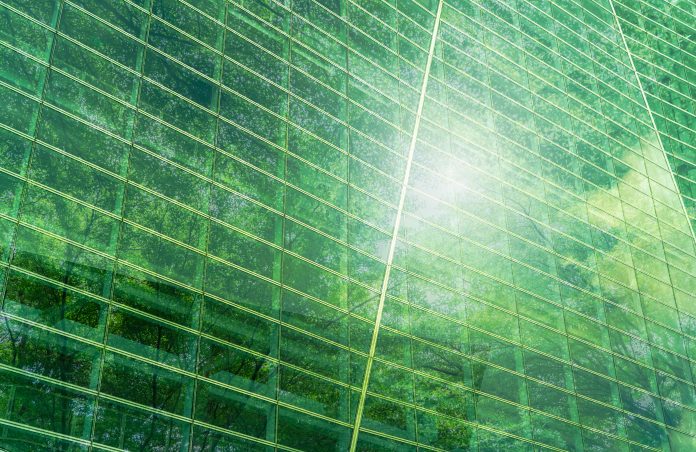Jan-Maurits Loecke, sustainability fellow & associate principal at architecture firm CallisonRTKL (CRTKL), explores how building design, retrofitting and collaboration can promote net zero in the construction industry
The expectations are high. Ultimately, it is none other than the entire earth’s population that is watching the real estate industry deliver on its promise to immediately reduce greenhouse gas emissions and energy use intensity within the built environment to a level where global warming does not exceed 1.5 degrees.
We must reduce, if not eliminate, all new CO2 emissions from the construction and operation of buildings, but also find ways to extract the carbon that is already in the atmosphere. While we shall not relax our efforts to reduce carbon, it could be too little too late. Warnings of an impending climate catastrophe have been circulating for almost half a century. With the increasing frequency of extreme weather events already occurring now, we need to start planning for adaptation.
The Covid pandemic has made us understand how unhealthy indoor spaces can be. This accelerated the trend toward buildings that blur the lines between inside and outside. We envision cities and buildings becoming more nature-like, bringing in biophilia, unconditioned, semi-tempered spaces, with natural materials, sufficient daylight and volatility in humidity, temperature, and airflow.
Design has a tremendous impact on the mental and physical health of people and of the planet, and it’s good that we’re reconnecting with nature. Foresting and greening cities and buildings are key solutions as trees can sequester carbon from the atmosphere. Biophilia such as green walls can prevent urban heat island effects through their evaporative cooling effect and shading. Studies show that they can reduce heat gain by up to 10°c, resulting in significant energy savings, reduced cooling costs and decreased electricity costs (up to 20%). Similarly, the living wall provides an extra layer of insulation, which helps to retain heat in colder temperatures.
Retrofit existing buildings
Moving forward we must design for flexibility and reuse; never again should a building be confined to one user type. Equally, the solution should not always be to design new, but to better retrofit buildings that already exist. For example, improving the envelope of a building so that it better regulates indoor conditions and provides better daylight, emits less carbon and even generates its own energy, like the work we are carrying out at one office project in Castellana, Madrid. The office built in 1990 was in need of upgrading and rather than demolish the building, a careful design upgrade for the façade creates a high-performance envelope, with photovoltaics generating its own energy and a bio-climate system exposed to the sun that included glass slats for solar protection.
Positive design to improve the value of the built environment
People, the planet and positive design are at the forefront of everything we do with sustainability being a constant driving force. Our annual Sustainability report ‘Shaping a Better World,’ is our own commitment to ensure we apply the greatest available intelligence to create a compelling design that improves the value of the built environment while avoiding impact on the natural environment. We have to measure where we are and where we go in order to avoid further damage to the planet – we cannot downplay the importance of the data and intelligence we now have available. Using advanced simulation tools, our designers can have a better understanding of environmental impacts.
Climate-neutral projects by 2029
To improve the performance of any given project we are pledging to be committed to climate-neutral projects by 2029 – one year ahead of the mainstream agenda. This means working on climate-positive projects by 2030 and including materials by 2040, to ensure we design developments that generate energy, clean the surrounding areas and bring back diversity. Indeed, while many solutions are already available, such as adaptive reuse of existing buildings, the re-emergence of timber structures, modular construction and cement-free alternatives to concrete, we must not stop there.
The construction industry moves slowly in comparison to others and is fundamentally building the same way as it was 50 years ago, implementing only minor changes. There needs to be a paradigm change.
Collaboration to promote net zero in the construction industry
Developing and using our own technology understands the climate in a particular location, and helps us to design buildings accordingly. Our research from the outset looks at reducing environmental impact and moving towards restorative and regenerative systems by working with nature to increase efficiency and harness renewable energy.
We call on our partners, collaborators and researchers to join us in taking action to build greener and for the future. We need to see improvements in industry-wide collaboration, tougher legislation, and more incentives to promote net zero from cradle to grave, in terms of water conservation and waste reduction.
Net zero building cost is a barrier
Net zero building cost is something that is regularly flagged as a barrier; there is a parallel analogy to food as eating healthy costs more. However, the reality is that many strategies can be implemented with minimal additional costs and in the long term, the building will be cheaper to operate. It is only through wider adoption that these costs come down and sustainability can become mainstream, not a luxury.
However, all of the above can only be done together with cross-disciplinary collaboration across generations, stakeholders, academia and the end user. Fast and decisive action is required to achieve the goals of the Paris Climate Agreement and new goals to come out of COP27. This is the only way to achieve net zero in the construction industry.














